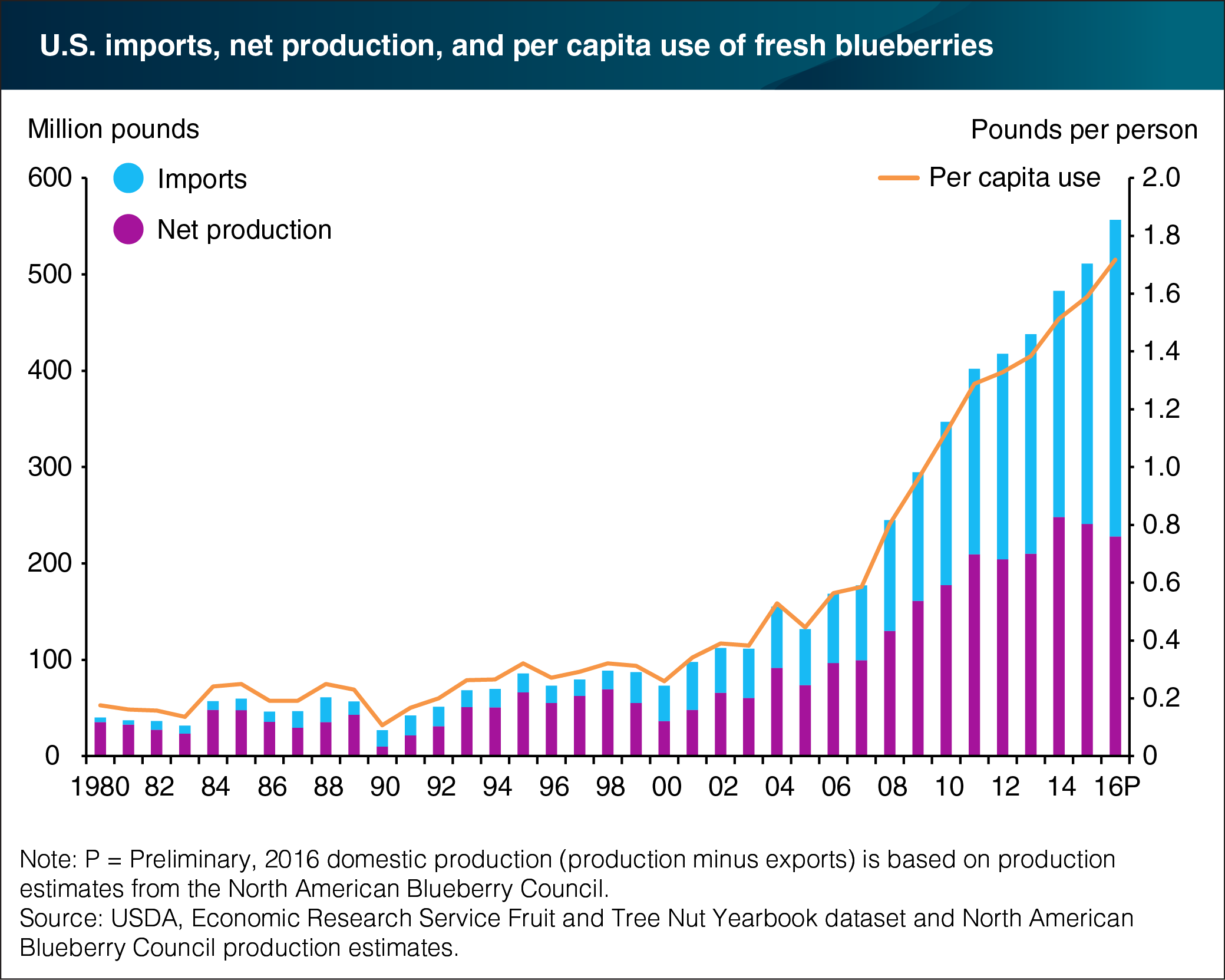U.S. fresh blueberry demand continues to rise
Per capita use of blueberries nearly tripled since 2006, largely attributable to growing demand based on the potential health benefits of berries in the diet. In recent years, farmers have expanded production to help meet this demand. As a result, net domestic production doubled and imports increased by almost four times. In addition to increased demand, consumer preferences for year-round availability of popular fresh fruits and vegetables necessitates a greater reliance on imported goods. Domestic blueberry production primarily occurs in the spring and summer seasons. In the fall and winter, southern hemisphere countries like Chile are in their growing season and supply the United States with a significant share of its blueberry imports. In 2016, net domestic production fell slightly, while imports increased. This resulted from lower than expected production in States that normally supply the fresh market like, Georgia, Florida, New Jersey, North Carolina, and California.

This chart appears in the ERS Fruit and Tree Nut Outlook report released in April 2017.







